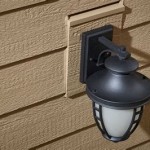How To Get Mould Off Of Outdoor Cushions
As an indispensable element of outdoor living spaces, cushions provide comfort and style. However, they can also become susceptible to mould growth, especially in humid environments. Mould, not only unsightly, can also pose health risks such as respiratory problems. Therefore, prompt action is crucial to prevent further damage and health hazards.
In this comprehensive guide, we'll delve into the effective methods for removing mould from your outdoor cushions and restoring their pristine condition. Follow these steps to ensure the longevity and hygiene of your outdoor furniture.
1. Identification and Prevention
Before delving into the removal process, it's essential to identify mould and understand the measures to prevent its recurrence. Mould typically appears as discoloured patches with a fuzzy or slimy texture. Timely identification is key to preventing it from spreading and causing extensive damage.
To minimise the risk of mould growth, ensure your cushions are stored in a dry and well-ventilated area when not in use. Avoid leaving them damp or exposed to excessive moisture.
2. Surface Cleaning
Begin by gently brushing off any loose mould spores using a soft-bristled brush or a vacuum cleaner with a soft brush attachment. This step helps remove superficial mould and prevents it from spreading during the cleaning process.
3. Bleach Solution
For effective mould removal, prepare a solution using one part bleach (sodium hypochlorite) to three parts water in a bucket or large container. Submerge the affected cushion in the solution and allow it to soak for 30 minutes. This solution should not be used on coloured or delicate fabrics as it can cause discolouration.
4. White Vinegar
An alternative to bleach, white vinegar is a natural and effective mould remover. Pour undiluted white vinegar into a spray bottle and apply it directly to the mouldy areas. Allow it to sit for 15 minutes before wiping the solution away with a clean cloth.
5. Commercial Mould Remover
If homemade solutions prove insufficient, consider using commercial mould removers specifically designed for outdoor fabrics. Follow the manufacturer's instructions carefully and test the product on an inconspicuous area before applying it to the entire cushion.
6. Rinse and Dry
After applying the chosen cleaning solution, thoroughly rinse the cushion with clean water to remove any residual cleaning agents or mould spores. Use a garden hose or a portable sprayer to ensure effective rinsing.
Allow the cushions to dry completely in a well-ventilated area. Sunlight has natural disinfecting properties that aid in the drying process. Avoid using heat sources such as hairdryers or radiators, as this can damage the fabric.
7. Maintenance
Regular cleaning and maintenance are crucial to prevent mould recurrence. Brush off any dirt or debris from the cushions regularly. If they become damp, dry them promptly to avoid moisture build-up.
Conclusion
By following these steps, you can effectively remove mould from your outdoor cushions and restore their beauty and comfort. Remember to store them properly, clean them regularly, and address any mould growth promptly. These measures will ensure the longevity of your outdoor furniture and create a clean and inviting outdoor living space.

How To Remove Mildew Stains From Outdoor Cushions

How To Remove Mildew Stains From Outdoor Cushions

Cleaning Mrs Hinch Fans Share How To Remove Mould From Outdoor Cushion Covers Express Co

How To Remove Mildew Stains From Outdoor Cushions

How To Remove Mildew From Outdoor Furniture Cushions

How To Remove Mildew Stains From Outdoor Cushions

5 Ways To Remove Mold Mildew From Outdoor Cushions Prudent Reviews

How To Rid Outdoor Cushions Of Mildew

Wet Forget Outdoor Mildew Remover For Patio Furniture Life S Dirty Clean Easy

How To Remove Mildew Stains From Outdoor Cushions
Related Posts







